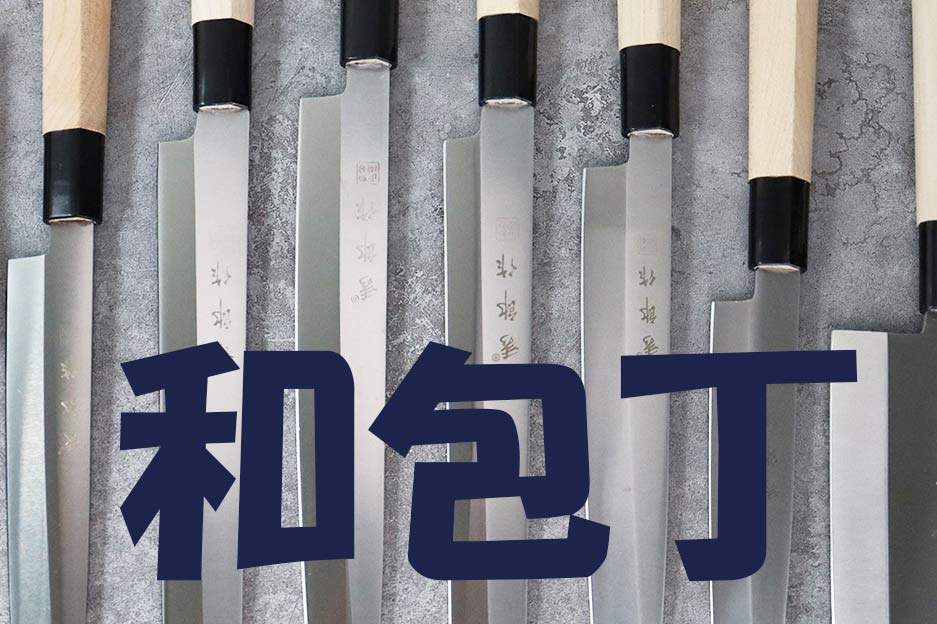Traditional Japanese knives have earned a global reputation and Iconic status for their unparalleled craftsmanship, precision, and ability to bring out the best culinary creations. Rooted in centuries of tradition and honed by skilled artisans, these knives are essential for chefs and cooking enthusiasts. This article explores the five "must-have" traditional Japanese knives every kitchen should boast.
#1 Nakiri Knife: The Vegetable Virtuoso.
Nakiri, which translates to "leaf cutter," was explicitly designed for chopping, slicing, and designable vegets. Nowadays, its become one of the main knives in Japanese kitchens. The Nakiri excels at cleanly slicing and dicing vegetables with its straight-edged, double-sided blade. Its thin, double-edged blade (around 165-170cm) and flat cutting edge allow for clean, swift cuts through any produce, reducing cellular damage and maintaining the freshness of the ingredients.
From delicate herbs to dense root vegetables, the Nakiri is the go-to knife for preparing stunning salads, stir-fries, and vegetable-centric dishes. We are 100% sure that Nakiri will become your quintessential culinary companion if you often prepare vegetable-based dishes.
Another traditional Japanese vegetable specialist is the Usuba knife.
The Usuba, or 'thin blade,' like the Nakiri, is designed for chopping and slicing vegetables but differs critically – its single-bevel design. This single-beveled blade edge allows the Usuba to make incredibly (fantastic) precise, thin cuts, perfect for those aesthetically appealing vegetable garnishes. However, the Usuba demands high skill and experience to handle correctly. In the right hands, the Usuba is an instrument of art, transforming simple ingredients into culinary masterpieces.
#2 Deba: The Heavyweight Champion for fish and poultry preparation.
Next, we have the Deba, the heavyweight of Japanese culinary knives. Ranging from 15 to 30 cm, this knife is often used to cut through fish and poultry. It's heftier than the other knives on this list, with a thick spine and a single bevel, making it ideal for heavy-duty tasks like breaking down whole chickens or filleting fish. It requires a certain skill level to utilize appropriately, but once mastered, the Deba becomes an irreplaceable part of your kitchen arsenal.
#3 Yanagiba: The Sashimi Specialist
Finally, we arrive at the Yanagiba, the quintessential sushi knife. Yanagiba translates to 'willow leaf blade,' referring to its long, slender, and single-beveled design. The Yanagiba is intended to create the finest and most precise slices of sashimi. Its length, typically 27 to 30 cm, allows it to cut through a piece of fish in a single, smooth stroke, preventing damage to its cellular structure and preserving its original flavor. If you're a sushi lover, the Yanagiba is a must-have.
But! In the Sushi and Sashimi realm, there is one more rare creature called Takohiki knife (The Octopus Slayer), a distant cousin of the famed Yanagiba knife, hailing from the enchanting land of Kanto (Tokyo area). They share similar sazes and duties; both blades are the Masters of slicing fish artistry. But Takohiki, with its straight and poised tip, is a maestro in taming the coiled arms of the graceful octopus (Tako, in the elegant tongue of Japan).
Legend states that the Takohiki was created in the Edo period when one Sushi chef was punished after he pointed the Katana-like tip of Yanagiba in a noble customer direction. And because of that, Kanto Sushi chefs had to modify their knives to the squared-off tip. Interestingly, the tradition of not pointing your knife toward your customers persists in some famous Japanese restaurants in present-day Tokyo, where the Takohiki is still favored above the Yanagiba.
Anyway, Takohiki knives excel at slicing octopus, while Yanagiba knives are more versatile for cutting various raw fish delicacies with precision and elegance.
In conclusion, traditional Japanese knives are more than just tools; they blend history, culture, and art. Whether it's the Nakiri's precise vegetable cuts, the Deba's powerful fish filleting, the Takohiki's specialized octopus slicing, the Usuba's ultra-thin vegetable slicing, or the Yanagiba's smooth sashimi cuts, each knife offers a unique experience that encapsulates the essence of Japanese culinary artistry. Mastering these knives improves your cooking skills and deepens your appreciation of the culinary arts.



POST COMMENTS
0 COMMENT(S)